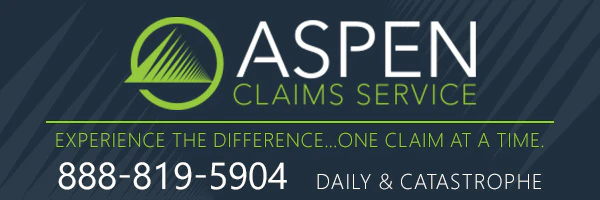
Optimizing Policyholder Satisfaction: Understanding and Enhancing the Claim Process
Sunday, July 9th, 2023 Aspen Claims Service Mastering Relationship Building in the Insurance LandscapeIn the world of insurance, the claim process is often regarded as the most crucial interaction between the insurer and the insured. This interaction is the embodiment of the promise that an insurance company makes to its policyholders - the promise of support, protection, and assistance when the unexpected happens. But beyond the administrative and financial aspects, there is an often overlooked but equally critical component: the human touch. As we delve into the journey of a claim process, we discover that it’s not just about transactions; it’s about fostering relationships built on trust, compassion, and transparency. It’s about optimizing policyholder satisfaction.
The claim process begins the moment an insured reports a loss. The clock starts ticking, and the insured is plunged into an often unfamiliar and confusing landscape. The claim representative, thus, becomes the policyholder’s guide, their beacon of hope amidst the turmoil. But to effectively fulfill this role, a thorough understanding of the claim process and its various stages is imperative.
The first step is usually the reporting of the claim, followed by the assignment of the claim to a professional who will handle it. Next comes the investigation of the claim, the review of the policy, the determination of coverage, and finally, the resolution of the claim, be it through settlement or denial. At a glance, this may seem straightforward, but it’s far more intricate.
Imagine the claim process as a trek through a dense forest. At first glance, the forest may appear intimidating, teeming with uncertainties and possible challenges. But every seasoned trekker knows that the key to a successful journey lies in preparation and understanding of the terrain. The policyholder is like a first-time trekker entering this forest, and the claim professional is their seasoned guide.
But how do claims adjusters equip themselves? The first step is to grasp the ’map’ of the journey - understanding the claim lifecycle. Let’s explore this map in detail.
At the beginning of the claim lifecycle, the policyholder has just experienced a loss. The initial claim reporting is much like the moment the trekker steps foot in the forest. It’s a critical moment, one that sets the tone for the rest of the journey. It’s a point where empathy and reassurance from the claim professional are invaluable. The assurance that they have a guide who will navigate them through this complex process can provide immense comfort to the policyholder.
Then comes the assignment phase. Here, the claim is handed over to the claim professional who will handle it. This is the point where the trekker meets their guide. It’s a time for introductions, for building rapport, and establishing trust. The claim professional must reassure the policyholder that they have the expertise to handle the claim effectively and are committed to working in their best interest.
With the groundwork for a strong relationship laid, the journey into the forest - or in this case, into the details of the claim - begins. The investigation phase is where the claim professional gathers all necessary information about the loss. For the policyholder, this phase may involve answering difficult questions and providing necessary documentation. The claim professional, acting as the guide, must ensure the policyholder understands why this information is needed and how it will help in processing their claim.
The process of understanding and managing a claim is complex and nuanced, just like navigating through a dense forest. Yet, with an empathetic approach, transparent communication, and the right expertise, claim professionals can turn this potentially challenging experience into a journey of trust and satisfaction for the policyholder. After all, the trek through the forest is just beginning, and every step taken together is a step towards optimized policyholder satisfaction.
As the journey through the claim lifecycle continues, the claim professional and the policyholder move on to the crucial stages of policy review and coverage determination. Like reaching a fork in the forest trail, these stages represent key decision points in the journey that can significantly influence its course and outcome. For the policyholder, the decisions made here could mean the difference between a covered loss and out-of-pocket expenses. For the claim professional, it’s an opportunity to demonstrate their expertise, uphold the insurer’s promise, and further solidify the trust in their relationship with the policyholder.
During the policy review stage, the claim professional examines the terms of the policyholder’s insurance contract to determine what is covered and what is not. They’re looking at the fine print, the terms, the conditions, and the exclusions – they’re interpreting the ’trail map’. This phase could be challenging for policyholders who may not fully understand the complexities of their policies. For this reason, transparency becomes paramount. Claim professionals need to communicate effectively with policyholders, explaining the coverage details in a way that’s understandable and transparent. They have to point out the landmarks, the tricky paths, the safe havens – they have to interpret the ’trail map’ for the trekker.
Following policy review is the coverage determination phase. Here, the claim professional applies the findings from the investigation to the terms of the policy to decide whether the claim is covered. It’s like deciding which path to take at the fork – left or right, covered or not.
Imagine the policyholder’s anxiety as they await this decision. Empathizing with their situation and providing timely updates can help ease their concerns. And if the outcome is not in their favor, a transparent explanation of the reasons can go a long way in maintaining their trust. It’s not always about taking the path that leads directly to a covered claim, but about making sure the policyholder understands why a certain path was chosen.
However, the claim lifecycle doesn’t end at the coverage determination. There’s one last stage – the resolution. Whether the forest trail leads to a beautiful vista or back to where it started, it’s about how the trekker-guide duo reaches the end that shapes the trekker’s overall experience. The claim resolution stage, be it a settlement or denial, is the final step of the claim journey where the claim professional’s role as an empathetic guide can significantly influence policyholder satisfaction.
But to successfully navigate these critical stages, claim professionals need more than just a thorough understanding of the claim lifecycle and a knack for empathy and transparency. They need to be proactive. Proactive communication – anticipating questions, addressing concerns before they escalate, keeping the policyholder informed about the status of their claim – is a strategy that can greatly enhance policyholder satisfaction.
So, let’s delve deeper into this strategy and explore how claim professionals can implement it in their journey through the claim process. It’s time to delve into the forest once again, equipped with an empathetic approach, a transparent communication style, and a proactive mindset.
The beauty of a trek is not merely reaching the destination, but the path taken, the shared experiences, the lessons learned, and the connections formed. This is true for the claim lifecycle as well. While reaching a satisfactory resolution is important, the manner in which claim professionals guide policyholders through the process leaves a lasting impact. One of the most effective tools to shape this journey positively is proactive communication.
Being proactive means taking initiative, foreseeing potential issues, and addressing them before they arise. In the claim process, proactive communication could mean timely updates about the claim status, educating the policyholder about possible complications, and addressing queries and concerns even before they are voiced. It’s like the guide warning the trekker about a slippery slope ahead or a possibly confusing fork in the trail. The trekker feels taken care of, secure in the knowledge that they’re not alone, which significantly enhances their overall experience.
Proactive communication demonstrates the claim professional’s dedication to keeping the policyholder informed and cared for. It serves as an opportunity to clarify any possible misunderstanding or miscommunication that might come up, a preventive measure that keeps small issues from becoming significant problems.
Proactive communication also plays a crucial role in managing the policyholder’s expectations. It can help establish realistic timelines for the claim process, guide them on what to expect during each stage of the claim lifecycle, and prepare them for possible outcomes. This clear communication prevents the policyholder from feeling lost or overwhelmed, making the whole journey less stressful and more satisfying.
At the resolution stage of the claim lifecycle, whether it’s a claim settlement or denial, proactive, empathetic, and transparent communication is key. If it’s a settlement, guiding the policyholder through the details and ensuring they understand the terms can lead to a positive end to their claim journey. If it’s a denial, a detailed, empathetic explanation can soften the blow, helping to maintain trust and understanding, even in an unfavorable situation.
In conclusion, guiding policyholders through the claim lifecycle demands a thorough understanding of the process, empathy for the insureds’ situation, transparency in every interaction, and a proactive approach. These are the key ingredients in ensuring a positive, satisfactory claim experience for policyholders, a journey that they would remember not for the hurdles they faced, but for the trusted guide who stood by their side, every step of the way. Indeed, the role of claim professionals extends beyond mere claim handling - they are the vital connection between policyholders and their insurance providers, the trusted guides who make the complex journey of claim processing a satisfying experience.
Aspen Claims Service provides comprehensive claims adjusting services for daily and catastrophe claims throughout the lower 48 states.
Augment your mastery in the art of relationship building by delving into the other articles within our editorial series. Each piece illuminates a specific aspect, offering valuable insights and actionable tips to strengthen your relationship-building skills. From harnessing emotional intelligence to understanding cultural gaps, from leveraging technology and digital communication to the importance of ethics and transparency, our series addresses the crucial components of forging strong relationships in the insurance industry.

